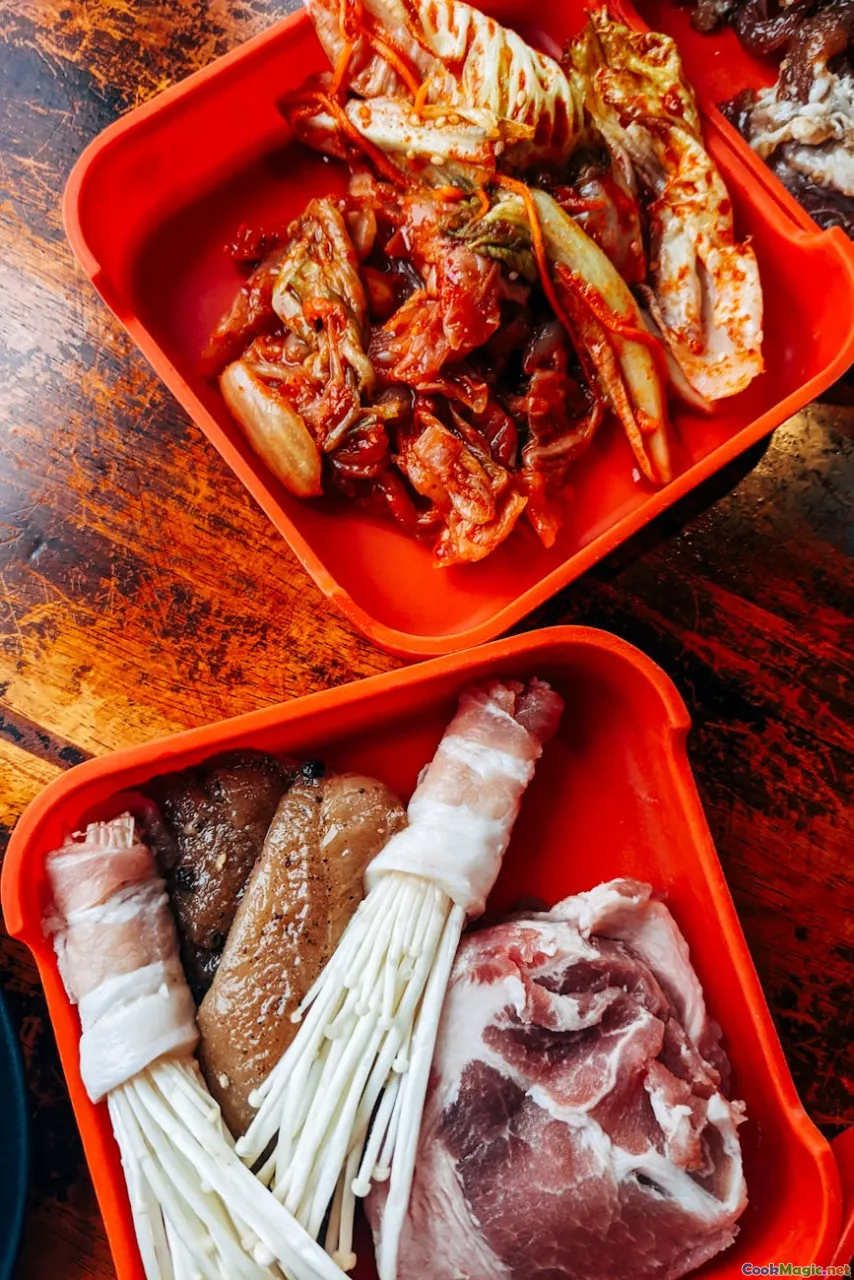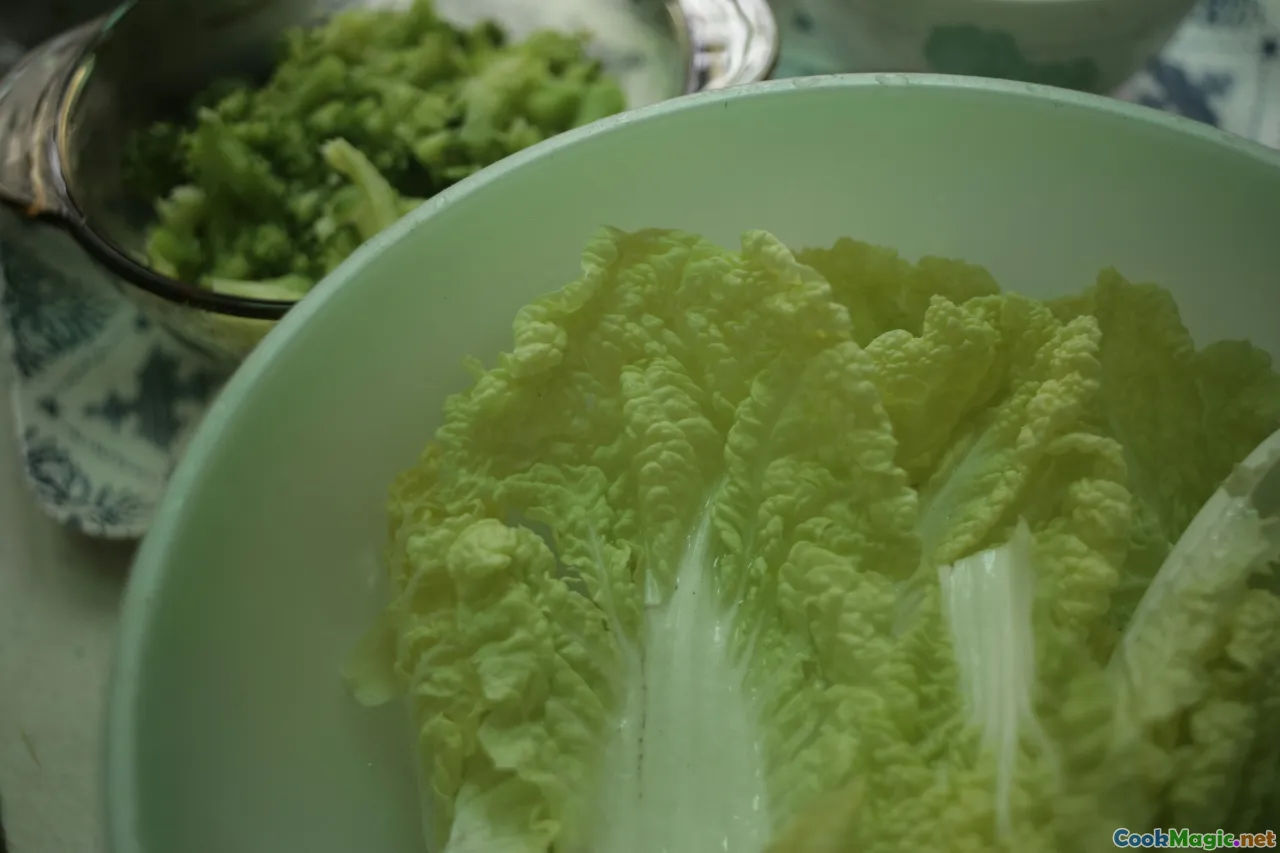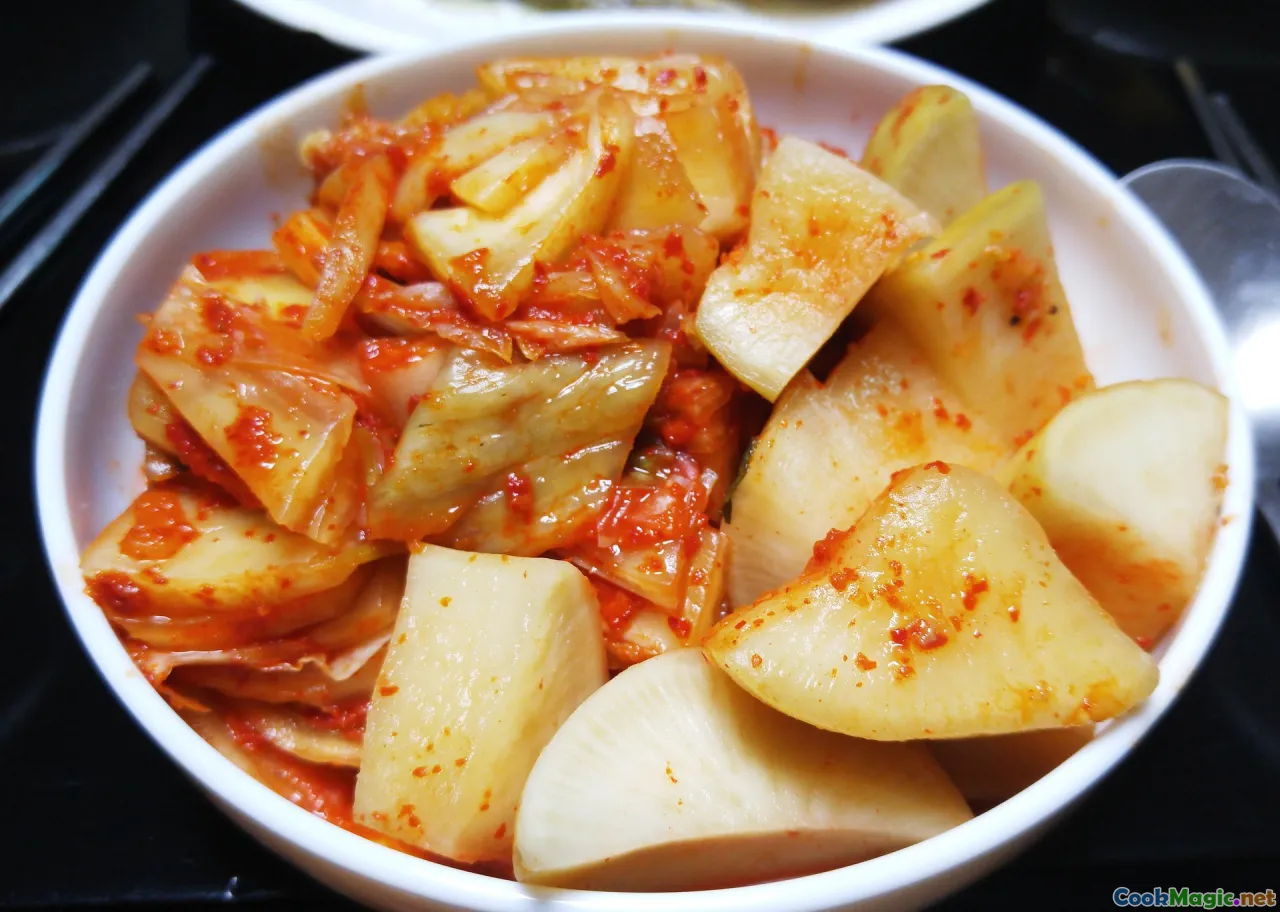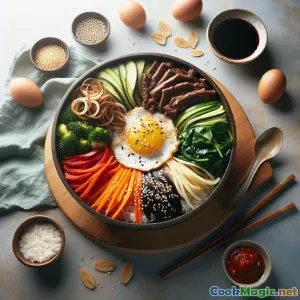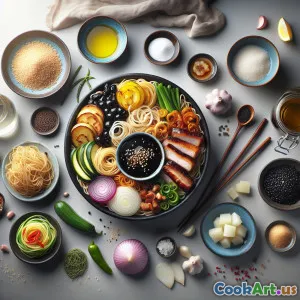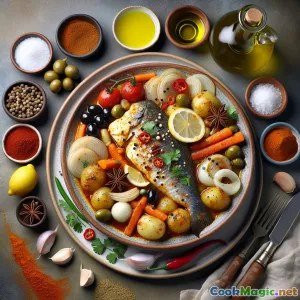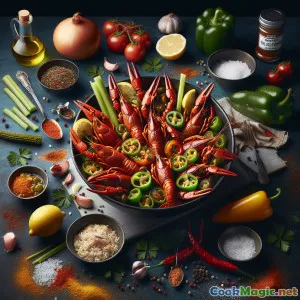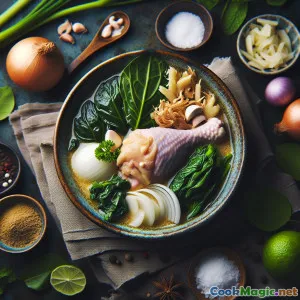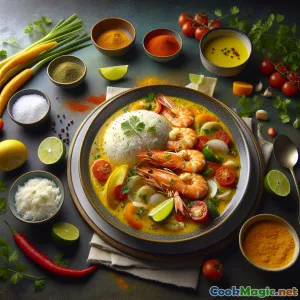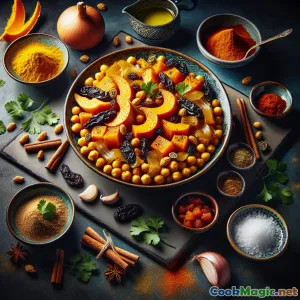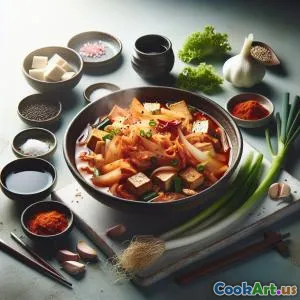
Delicious Kimchi Jjigae: A Korean Comfort Soup
(0 Reviews)Ingredients
-
300 grams Kimchi
(Use well-fermented kimchi for best flavor)
-
200 grams Pork belly
(Can substitute with beef or omit for a vegetarian version)
-
200 grams Tofu
(Firm tofu works best)
-
2 stalks Spring onion
(Chopped for garnish)
-
4 cloves Garlic
(Minced)
-
2 tbsp Gochugaru (Korean chili flakes)
(Adjust to taste)
-
2 tbsp Soy sauce
(For seasoning)
-
4 cups Water
(Or use vegetable broth for more flavor)
-
1 tbsp Sesame oil
(For enhancing flavor)
Salt, to taste
(Use well-fermented kimchi for best flavor)
(Can substitute with beef or omit for a vegetarian version)
(Firm tofu works best)
(Chopped for garnish)
(Minced)
(Adjust to taste)
(For seasoning)
(Or use vegetable broth for more flavor)
(For enhancing flavor)
Nutrition
- Servings: 4
- Serving Size: 1 bowl (300g)
- Calories: 350 kcal
- Carbohydrates: 30 g
- Protein: 22 g
- Fat: 18 g
- Fiber: 5 g
- Sugar: 3 g
- Sodium: 700 mg
- Cholesterol: 45 mg
- Calcium: 200 mg
- Iron: 3 mg
Instructions
-
1 - Prepare Ingredients:
Chop the pork belly into bite-sized pieces, tofu into cubes, and mince the garlic.
-
2 - Sauté Pork:
In a pot, heat sesame oil over medium heat. Add pork belly and sauté until browned.
-
3 - Add Garlic and Kimchi:
Stir in minced garlic and kimchi. Cook for about 5 minutes until kimchi softens.
-
4 - Simmer the Stew:
Add water (or broth), gochugaru, and soy sauce. Bring to a boil, then reduce heat and simmer for 20 minutes.
-
5 - Add Tofu:
Gently add tofu cubes to the pot and simmer for an additional 5 minutes.
-
6 - Garnish and Serve:
Serve hot, garnished with chopped spring onions. Enjoy your meal!
Chop the pork belly into bite-sized pieces, tofu into cubes, and mince the garlic.
In a pot, heat sesame oil over medium heat. Add pork belly and sauté until browned.
Stir in minced garlic and kimchi. Cook for about 5 minutes until kimchi softens.
Add water (or broth), gochugaru, and soy sauce. Bring to a boil, then reduce heat and simmer for 20 minutes.
Gently add tofu cubes to the pot and simmer for an additional 5 minutes.
Serve hot, garnished with chopped spring onions. Enjoy your meal!
More About: Delicious Kimchi Jjigae: A Korean Comfort Soup
Kimchi Jjigae: A Warm Hug in a Bowl
Kimchi Jjigae, or Kimchi Stew, is a beloved Korean dish that has become a staple in many households. This hearty stew is celebrated for its rich and spicy flavors, often enjoyed as a comforting meal during cold weather. The key ingredient, kimchi, which is fermented vegetables (usually napa cabbage and Korean radishes) provides the stew with its signature tangy flavor and a depth of umami.
Historical Significance
Kimchi Jjigae has its roots in Korea's long history of fermentation and preservation of food. Kimchi itself dates back several centuries, and as it evolved, so did the recipes that incorporated it. Traditionally, this stew was a way to utilize old kimchi that had fermented for a longer period, transforming it into a nourishing meal.
Cultural Importance
In Korean culture, food is often associated with family and community. Kimchi Jjigae is frequently served in households and is a common choice for gatherings. Its warming nature makes it a go-to comfort food, often paired with rice and other side dishes (banchan). The act of sharing a bowl of stew with loved ones is a cherished tradition.
Cooking Tips
- Quality Kimchi: The flavor of your jjigae largely depends on the quality and fermentation level of the kimchi. Use kimchi that is well-fermented for a deeper flavor.
- Protein Variations: While pork belly is traditional, you can substitute with beef, chicken, or even go vegetarian by omitting meat altogether and focusing on tofu and vegetables.
- Adjusting Spice Levels: The amount of gochugaru can be adjusted based on your heat tolerance. Start with less and add more if you prefer it spicier.
- Serving Suggestions: Pair the stew with a bowl of steamed rice and various banchan for a complete meal.
Unique Aspects
What makes Kimchi Jjigae unique is its adaptability. Ingredients can vary based on personal preferences or what is available. Some might add mushrooms, zucchini, or even instant noodles for a heartier meal. The opportunity to customize this stew reflects the creativity and personal touch of home cooks.
In conclusion, Kimchi Jjigae is not just a dish; it’s a representation of Korean culture, history, and the warmth of home. Whether you are a seasoned chef or a beginner, this stew promises to deliver comfort and satisfaction in every bowl.

